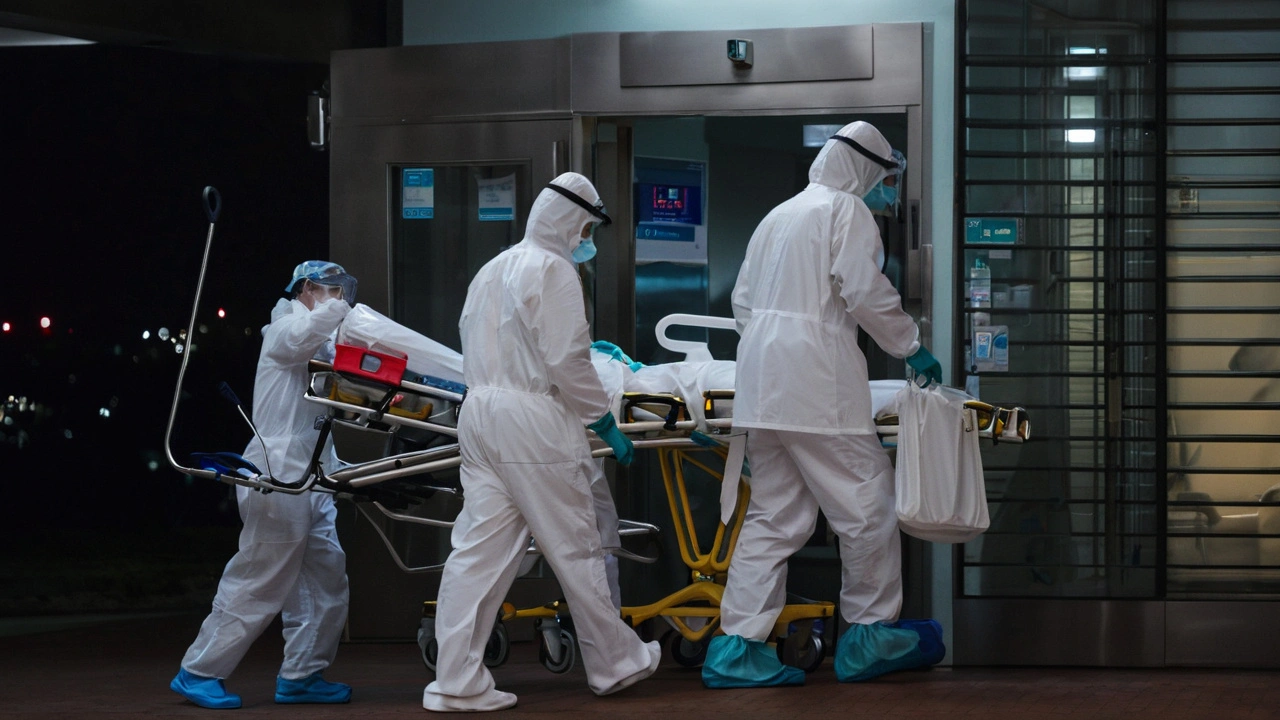Nipah virus: what to know and how to protect yourself
Nipah virus is rare but can be deadly. Past outbreaks in South and Southeast Asia showed death rates from roughly 40% to 75%, depending on the outbreak and how quickly people got care. That sounds scary, but the good news is that awareness and quick action cut risk. This page gives straightforward facts, signs to watch for, and clear steps you can take to stay safe.
What Nipah looks like — symptoms and timing
After exposure, symptoms usually appear 5–14 days later, though it can be shorter or longer. Early signs are fever, headache, muscle aches, nausea and sore throat. Within days some people develop drowsiness, confusion, difficulty breathing and severe brain inflammation (encephalitis). Others may have only mild flu-like illness. If someone has rapid breathing, chest pain, sudden confusion or seizures after possible exposure, treat it as an emergency.
How Nipah spreads — practical points
Nipah transmits in a few ways: direct contact with infected bats or pigs, contaminated food (for example, raw date palm sap touched by fruit bats), and close contact with sick people’s body fluids — saliva, respiratory droplets, urine. Health workers are at risk during unprotected care, especially when aerosol-generating procedures occur. It’s not a casual airborne virus like measles; close, repeated contact raises the danger.
Simple, everyday choices lower risk. Don’t drink raw date palm sap or consume fruit you can’t wash. Avoid handling sick animals. If you work with livestock, report sudden animal illness to vets promptly. In homes or clinics, encourage cough etiquette, handwashing, and use of medical masks when caring for someone unwell.
If you’re a health worker: use gloves, gowns, eye protection and N95 respirators for suspected cases. Isolate the patient in a single room when possible and follow local infection-control rules. Clean surfaces with household bleach solutions or standard hospital disinfectants.
Testing is done by PCR on blood, throat swabs or cerebrospinal fluid; public health labs handle confirmation. There’s no approved drug that cures Nipah — care is supportive: fluids, oxygen, managing complications. Some experimental treatments and monoclonal antibodies have been used under special access, and vaccines are in development, but they’re not widely available yet.
What to do if you suspect exposure: call local health authorities or your clinic right away. Describe the exposure — contact with bats, sick animals, or a patient with severe respiratory or neurological illness. Avoid close contact with others until advised. If you’re caring for someone at home, wear a mask, gloves, and wash hands often.
Stay informed through trusted public health sources and local health departments. Panic spreads faster than the virus — practical steps and fast reporting make a real difference.

Tragic Nipah Virus Fatality Reported in Kerala, India: Urgent Measures Underway
Keabetswe Monyake Jul 22 7A young boy's death due to the Nipah virus in Kerala has raised alarms. State health minister Veena George confirmed the tragedy to reporters. The patient was in the ICU of Kozhikode Medical College's Nipah isolation ward. This marks a significant Nipah virus fatality in the region.
More Detail